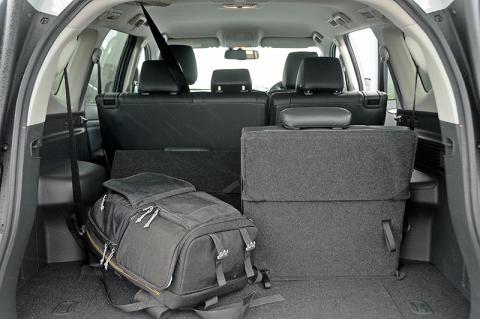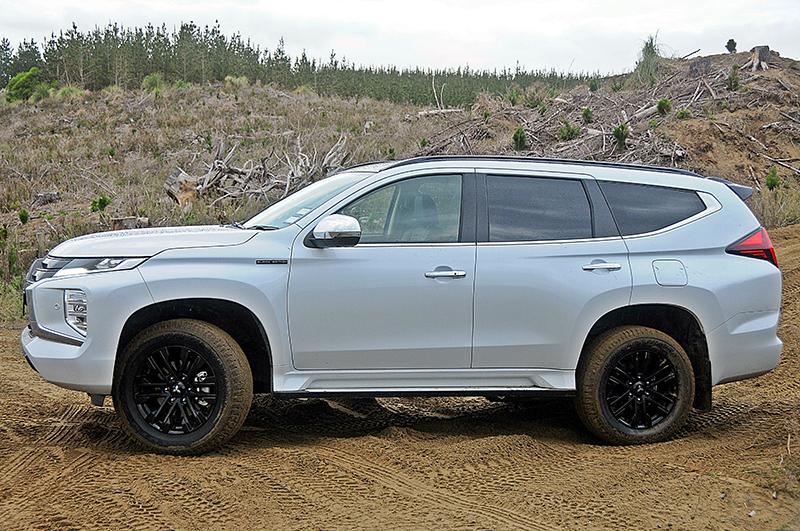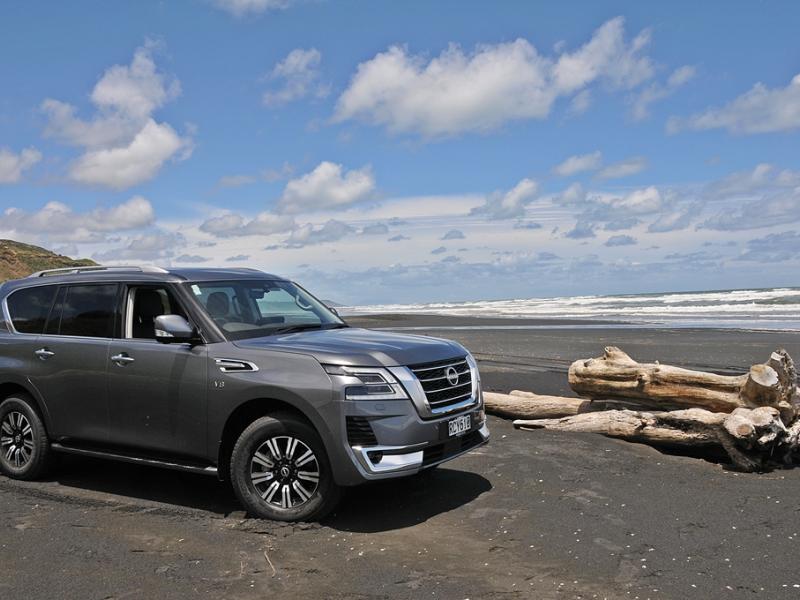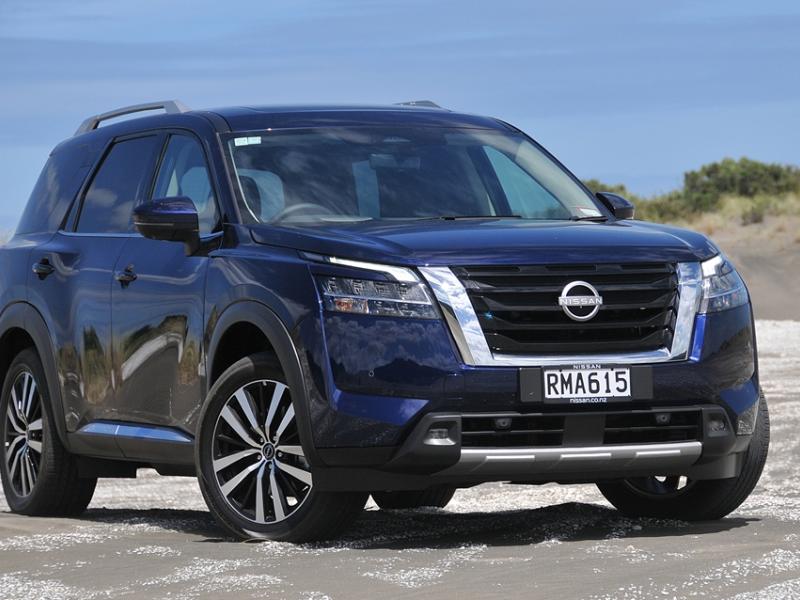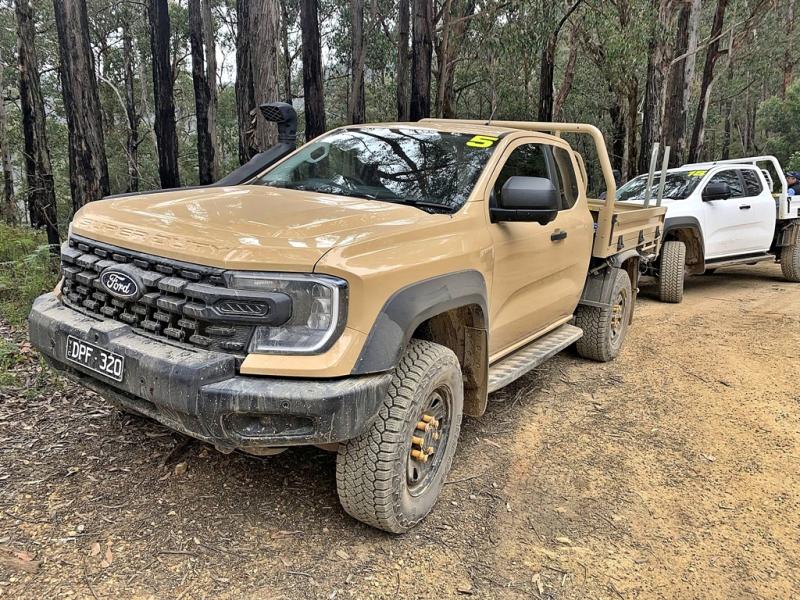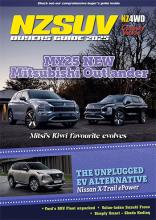There’s a reason New Zealand’s favourite vehicle is no longer a three-box passenger car, or a hatchback. There’s a reason the once mighty ‘station wagon’ or estate is now an endangered species.
They simply don’t do what we need to do these days. At work or play, moving furniture, chasing that fish elusive or on the grocery run, our utes and SUVs do everything we need them to.
So many would agree: there’s nothing more enjoyable than a run in the forest in a good capable 4WD ute or SUV. Nothing.
Luckily, the major manufacturers were quick to lock onto our passions for utes and SUVs. Some of the best of these share platforms these days.
Just as the Fortuner lays a veneer of SUV usefulness over a Hilux base for Toyota, just as the Everest ramps up the urban-rural appeal of the Ranger, so the Pajero Sport creates an excellent SUV – a seven-seater SUV – on the base of a Triton.
This magazine has enjoyed experiencing Triton’s development in recent years as it created its own blend of toughness and tech, but the Pajero Sport now opens up a whole new audience to Mitsubishi’s 4WD products.
Seven seaters are big news this year, with some new products arriving to challenge the dominance of the established masters and a couple – like Ford’s Everest – raising the bar with new versions.
Pajero Sport’s key rivals these days include the Everest, Toyota Fortuner, Isuzu MU-X and LDV D90.
When it arrived, the Pajero Sport filled Mitsubishi’s range between the larger standard Pajero (now gone), and the compact Outlander. It also fills a much older gap – one left by the demise of the old (and very old school) Mitsubishi Challenger.
That means in many cases it is just the right size for many Kiwi drivers looking for a larger SUVs.
It’s a crowded segment but there’s room for the Pajero Sport, which sits in the driveway with a price of around $60,000 which puts it within reach of many.
The mechanicals are familiar: a 135kW 2.4-litre MIVEC diesel engine, eight-speed auto transmission and Super Select 4WD offering shift-on-the-fly from RWD to 4WD high range.
Real-world fuel efficiency is open to debate. The Rightcar website says 9.2l/100km; Mitsubishi agrees. Media reports are mostly coming in with 10.0l/100km. We hit the 9.2 without too much trouble on a run up to Woodhill Forest, blew out the figures with some offroad work in the trees but then got back on track on the return trip for an overall of 9.4 l/100km.
The tow rating goes close to that of the Triton: 3,100kg braked is plenty for any SUV on New Zealand’s roads, much more than is required to lug around those big caravans and fizz-boats we all crave. In either case the Sport’s ‘seagull eye’ camera mode makes connecting the drawbar relatively simple, meaning it’s only that boat ramp reversing moment that will cause the driver to get sweaty-palmed.
Safety? There’s plenty. No less than nine airbags including a stand-alone side bag for the littlest passengers in the third row of seats. Active safety features including Forward Collision Mitigation, Blind Spot Warning and Rear Cross Traffic Alert are all standard. That adds up to a recent ANCAP rating of five stars.
The Black Edition tested has real road presence; no less if it’s a white Black Edition.
The privacy tint on the glass and the tasteful use of chrome highlights along window edges, along with the oh-so-modern front end treatment and the unique styling of the rear lights means the Sport is unlikely to be mistaken for any other medium-large SUV on the market. Inside there is an 8-inch touchscreen for infotainment with Apple CarPlay and Android Auto. There are four USB outlets and even an HDMI socket – perhaps for those times the family wants to bring along that 50-inch flat screen TV!
Both front seats have heater functions, power controls and are recline and rake adjustable.
The Sport rolls on 18-inch alloy wheels and its 265/60R18 Toyo Open Country tyres are squarely in the ‘AT’ niche. They’re quiet on the tarmac, grip well on wet tarmac, and come into their own on hard-packed or rocky dirt roads.
Like most SUVs with ute lineage, the Sport steps up its ‘live’ rear end to coil springs and disc brakes - 17-inch ventilated front and 16-inch rear. They cope well with the additional weight of the SUV body, which creates a vehicle with a kerb weight just over two tonnes.
Off road, a 30-degree approach and 23-degree departure angle lets the Sport navigate reasonably tricky terrain. The towbar takes a further edge off that rear angle figure. The ground clearance remains the same from the previous model: 218mm.
So the best place to try out this SUV was Woodhill Forest, and a Queen’s Birthday Weekend trip out to the Woodhill 100 offroad race was a revelation. This high speed ‘sprint enduro’ is set over an 11km lap in the Auckland 4X4 Adventure Park, and it was half deep sand and half minor logging roads. We were privileged to be allowed a lap of the track once the racing had concluded.
The Sport managed the logging roads – all corrugations, washouts and fist-sized rocks – with aplomb, never pushed off line and never crashing out on deeper washouts dug by the recent rains. There was good feedback through the steering and the compliant suspension dampened out the worst of the crash-and-bash.
Arriving at the pit area, there was the usual long line of race vehicles and tow vehicles waiting to get into the staging area. A quick turn of the rotary dial into 4WD Hi gave us access to an alternative route down the edge of the pines to park with decent proximity to the race and (actually quite good) food and coffee caravans.
Lumps of grass-covered sand and the occasional rotting pine log disappeared under the truck with little complaint.
Four hours later, with the last of the broken race cars extracted from the course, the roads were opened up and the Pajero Sport carried us out for a look at the track. 60 race cars had travelled these tracks up to 15 times. That’s the equivalent of 900 vehicles pounding through Woodhill’s gravel, sand and rock. The softer bits were channelled up to 300 mm deep or more, enough that the vehicles with less suspension travel had smoothed off the centre ‘hump’ for long sections and the mustard-coloured sand was flung to each side in drifts that were up to 400mm deep. The small race cars that use VW suspension have a curious ‘waddle’ in the crashy bits, the rear end almost swimming them down the track to create long sections where there’s a transverse twisting force thrown at the suspension of road vehicles like the Pajero with supple but limited travel. Not enjoyable for occupants, but the truck shrugged off the worst of it with ease.
Rookie error: the driver forgot to disable traction control/stability control. Just when maximum torque and good momentum was needed for a long soft uphill, the electronic aids were working against us. Momentum up the hill melted away alarmingly.
Just as it looked like we would have to back down the hill and engage 4-hi-lock on the transmission, the Sport responded to a robust accelerator input and dug deeper, and we chewed our way to the top of the rise with the DSC lights flashing like a disco.
It’s always good to change modes at the top of a hill where gravity isn’t fighting the vehicle.
The big soft berms were interesting, and a much smoother way forward, as was running two wheels on grasses either side of the punished centre track. Where we did have to dive into and out of major holes, the Sport’s 30-degree approach angle made for confidence that we’d come out of the other end of chewed-out sections that would completely swallow a small SUV with less ground clearance.
None of this is to suggest that we’d go out on the tough truck tracks set up by Park operator Roger Winslade, simply that the Sport coped admirably with a suitably challenging set of sand tracks – appropriate use of an SUV equipped with all-terrain tyres. Savvy drivers always know their limitations and those of their vehicle.
Looking around the pits afterward, two things were obvious: almost everyone tows offroad race vehicles with an SUV or 4WD double-cab ute. The ones who didn’t (including one chap with a rear wheel drive ‘high rider’ double cab) were being towed out of relatively firm sand by others with proper 4WDs.
One final note: there were a good half dozen current model Pajero Sports parked around, including one just a couple of months old owned by a bloke who has raced a heap of ‘Woodhills’ and now comes back to help marshal the event. Let’s call him by his nickname ‘Gunna’ and leave the last word to him: “I love it. Mate, these are great trucks. This thing does everything I ask of it and it’s just stunning to drive. I’ve put more than 2000km on this one in a few weeks so it’s going in for its first service already.”
To sum up: Mitsubishi has crafted a very capable seven-seater family wagon with the robust heart of the Triton and genuine off-road ability. The Sport is not the ‘old Pajero’, it is a re-interpretation of what the Pajero has meant to generations of Kiwi drivers and families, and it performs its role very well.
Mitsubishi Pajero Sport
New and tested 4WDs
Friday, 17 June 2022
